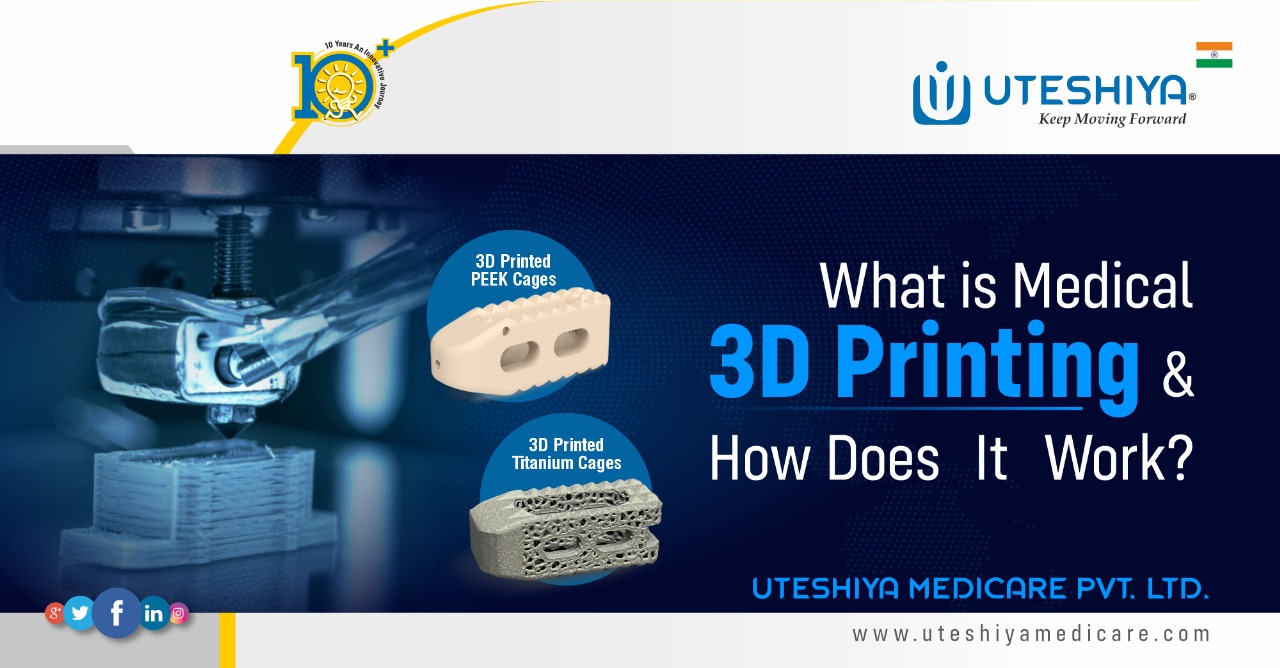3D printing for medical purposes has become one of the most exciting new ideas in health care in recent years. It’s changing how doctors treat patients and how hospitals do treatment by letting them make custom implants and print human tissues. But what is 3D printing for medicine, and how does it work? Now, let us simplify everything.
Technology and health have become more connected in recent years, opening up new possibilities that weren’t possible before. One of these new ideas is medical 3D printing. It lets doctors make unique solutions for each patient, lowers the risks of surgery, and even looks into printing live tissues. It really has an innovative effect.
How to Understand 3D Printing for Medicine
Doctors and engineers use a special printer to build three-dimensional things one layer at a time. This is called medical 3D printing. These tools don’t use ink to print on paper; instead, they print on things like metals, ceramics, plastics, or even living cells.
The main goal is to make medical devices, implants, or even body parts that meet each patient’s specific needs. Because everyone is different, 3D printing lets us create solutions that are personalized to each person instead of goods that work for everyone.
How does it work?
Medicine Digital modeling is the first step in 3D printing. Doctors often use imaging tools like CT scans and MRIs to make 3D images of an organ or bone in a patient. After that, this model is sent to the printer. The machine keeps adding layers of material until the thing is complete.
There are different levels of how long the process takes, from a few hours to several days. The printed item is cleaned, sterile, and made ready for medical use once it is done.
Medical Applications of 3D Printing
3D printing can be used in many ways in healthcare. Some of the most common are as follows.
Custom Implants and Prosthetics
Instead of using standard implants, doctors can make ones that fit perfectly. Printing jawbone implants that are specifically the right shape for each patient is possible.
Models for surgeries
Surgeons can practice complex surgeries on 3D-printed models of an organ or bone from a real patient before they do the real surgery.
Medical Devices
You can print tools like braces for your teeth, hearing aids, and surgery instruments more quickly and for less money.
Bioprinting
This is one of the most advanced fields. It uses live cells as “ink” to print skin, cartilage, and organ parts. This is currently a work in development, but it has a lot of potential for the future.
Achievements in Reality
Don’t think of this technology as just a project anymore. Doctors in many countries have already used 3D-printed devices and found them to work well. For example, people who had damage to their skulls have gotten implants that were made just for them and helped them heal faster. Also, kids born missing parts of their limbs have been given affordable replacements made with 3D printing.
3-D printing is not just a dream for the future; it’s already changing people’s lives.
Advantages of 3D printing for medical purposes
The growth of 3D printing is suitable for both doctors and patients in many ways. One of the best things about this is that it can be customized. Instead of using standard implants, medical teams can make devices that fit each patient’s body shape.
Speed is another benefit. Prototypes and models can be made much more quickly than traditional methods, so that doctors can get ready for treatments faster.
3D printers can also save money by making many medical tools and parts at a lower price. The most important thing is that these things lead to better results. The personalized care this technology makes possible helps surgeons plan better, surgeries are safer, and patients often get better faster.
Use of 3D printing for education and training
Training people to be doctors is another exciting area. Instead of using textbooks or cadavers, future doctors and medical students can train on genuine 3D-printed bones and organs. Doctors can get practical training with these models, which helps them feel more confident before operating on real people.
Print models are also used in hospitals to help patients and their families understand complicated processes. People feel safer and more secure before treatment because of this.
Issues and Limitations
Despite the excitement of medical 3D printing, there are still some problems that need to be solved.
- Concerning regulation and patient safety, it is imperative that all innovative medical devices undergo extensive testing.
- It can be costly for hospitals to put up the necessary equipment, such as printers and supplies.
- Bioprinting is very complicated because it is still in its early days, and printing living tissues and making organs that work perfectly are big scientific tasks.
3D printing for medical uses in the future
Things look good for the future. Scientists are trying to print more advanced cells and even whole organs. Imagine a time when someone who needs a kidney transplant could get one made from their own cells through 3D printing. This would lower the risk of rejection.
More hospitals will use 3D printing as technology gets better and costs go down. It might be used in healthcare as often as X-rays or MRIs.
Wrapping It Up
One of the most important advances in healthcare right now is medical 3D printing. It lets doctors give more personalized care than ever before, from making individual implants to printing tissues. Problems still need to be solved, but the progress made so far is impressive.
Research and development are always going on, so one day we might be able to use a printer to fix or replace broken bones, lost body parts, or even organs that aren’t working right. This technology not only means better care for millions of patients, but it also gives them hope for the future of health. It proves that science and imagination can really change healthcare, making it faster, safer, and more personalized than ever before.

